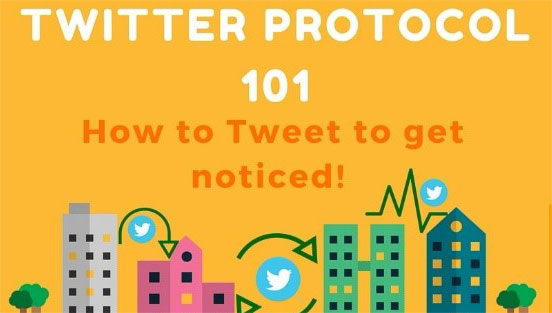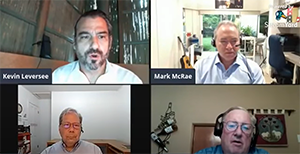You’re keen to turn social media into an effective marketing tool. “Engagement,” a buzzword sounding term, is supposed to be the magic bullet to drive organic traffic to your site and increase sales.

Maybe you already have a decent Twitter following, but is anyone getting off Twitter to YOU?
Turning social media engagement into tangible results is easier than you think. Here’s a secret even the heavy hitters themselves don’t believe: it has almost nothing to do with what big brands are doing.
Engagement is a confusing word at the moment. It underlines the evolution from “online marketing” and “social media marketing” to just marketing. Marketers have embraced the post-Penguin 2.0 era, and “organic marketing” is king. Black hat keyword filled lists are out. Real, serious content is in.
But engagement is not a goal in itself.

(These are actual engagement increases we recently achieved for one client.)
If your social media outreach is not driving brand awareness, opt-ins, and an increase in sales, you need to reassess your approach.
Engagement v. Selling: Which are you doing?
It is critical to remember that all tweets are not created equal. Some tweets that establish rapport and brand build while others are sales efforts. While your audience can’t tell the difference, they serve different purposes.
Engagement for its own sake may seem like throwing money away, but your sales won’t exist without it. Just straight sales messages, “Buy Now!”, “Special”, etc, is the online equivalent of a cold call. Even if they have some idea of who you are, they don’t care and you will be lost in the Twitterverse.
Engagement lays the groundwork for every other lead generation effort.
The Lead Generation Equation: Content + Content + Content
A small business owner can figure Twitter out, follow their policies, learn some tricks, and gain a following. The hard part is creating original content that will drive users to your site, and maybe even to share it.

Original content includes a huge variety of things, which can make it a bit easier to create: blogs, articles, e-books, videos, art, and infographics. Infographics are a fantastic starting point as they are visually appealing, immediately engaging and present information is a way that is an easy digest.

Make sure any infographic is branded on the PDF file with your logo and URL so that when the art is expanded, someone is seeing your name. In this case, the tab effect works in your favor because the customer will open a tab to search you.
You are probably too busy running your business to sit down and write an article. Instead, you might find someone in your firm who can write and has the time. Or you could hire a content writer or creator.
Writers, video producers, photographers, and designers can be found on freelance websites like Upwork or People Per Hour. But fair warning: good content creators cost a premium, but you may find it’s worth it.
To save a few dollars, free sites like Canva can let you start design your own infographics, and there are thousands of blog resources to help you get writing.
If that all seems too hard, try grabbing your mobile and make a quick video of yourself sharing something important to your niche market.
What do your 140 Characters Say?
When you have the infographic or other content, what do you tweet with it?
The Anatomy of an Engaging Tweet:

Notice it’s short, contains eye-catching art, and drives to a website for more information. You don’t have to do much more for a basic tweet that will grab attention. However, to compete with the biggest brands, you might want to step up your game with some of the “secret weapons” offered by Twitter,
Not So Secret (And Completely FREE) Twitter Weapons
Contained in Twitter’s cache of articles are how-tos that allow you to do anything from use meta tags to move your content-linked tweets up the news feed, overcome the 140-character limit, and get an extra layer of analytics, to tools that let you spy on your competition, and your customers, with no one the wiser!
Among some of the lesser known, and completely free, tools Twitter has to help you engage customers, gain retweets, and drive traffic to your pages are Twitter Cards.
Twitter Cards allow you to:
- Tweet 140 characters about your content, but also a content preview of your page including summary and art.
- Tweet photos with clickable URL embeds that take someone straight to your page.
- When used in with pics.twitter.com, they move your art content up front in your followers’ news feeds.
- When used with Vine, they also do the same for video links.
- You get a full breakdown including analytics, of which audiences responded best to which type of tweet.
Tweet, Tweet, and Tweet Again!
You cannot send a single tweet into the world and expect to make a splash. Over 320,000 tweets a minute run on this massive platform, so be prepared to send your tweets out 3-15 times a day.
Another “Secret Weapon”: LISTS
Knowing Twitter lists will put you far ahead of most social media managers. They make engagement simple and far more effective.
You can make them Private or Public: add someone to a list, and receive every tweet they post in your curated list newsfeed, without following them!

The Bottom Line
Engagement on social media is the opening act, warming up your audience to the idea of buying from you. The starting point in engagement is sincerity: empathy, trust, and credibility. Twitter builds rapport faster than any other medium. If you can connect before you mention your offer, you will be better able to convert engagement into sales.

















